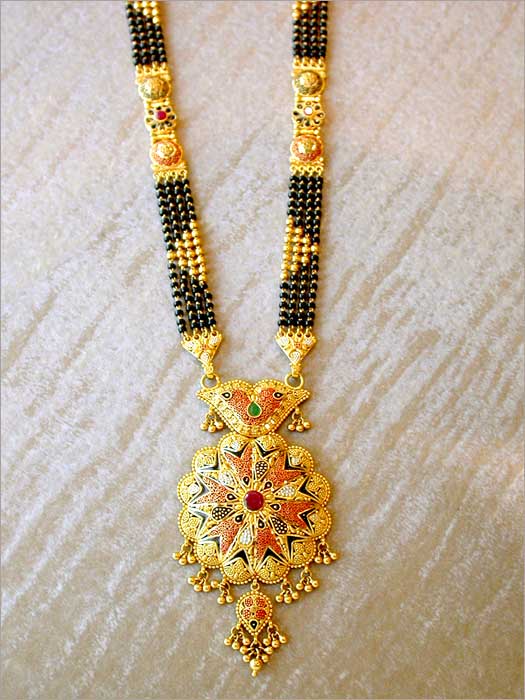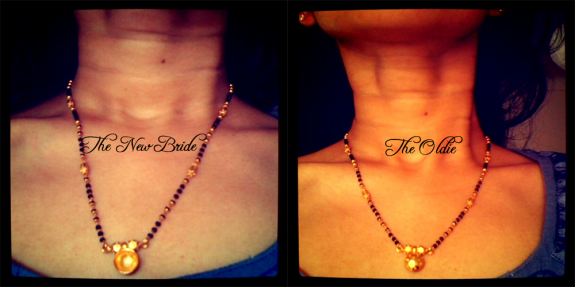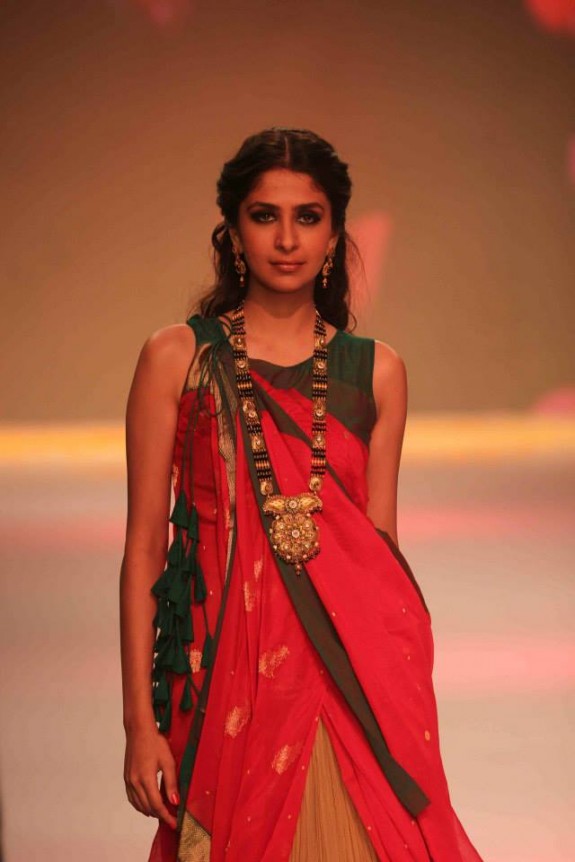The trend of wearing the black-and-gold beaded necklace, called the mangalsutra, has been in Indian traditions for ages. The word comes from mangal, meaning auspicious or holy, and sutra, meaning thread.
An embellished, Maharashtrian mangalsutra with a pendant.
The history of the necklace can be traced back centuries to colonial India, where the thread had a special role in the wedding ceremony. A yellow thread, dipped in turmeric, was tied around the bride’s neck after all the Vedic prayers and hymns were recited by the priest and the couple was officially married. It was a blessed thread that signified the beginning of a new, strongly-tied bond between the married couple. The bridegroom would tie this thread around the neck of his new bride, but the groom’s sisters often tied a knot of the necklace as well – a symbol of their acceptance of the bride into the groom’s family.
The mangalsutra meant so much to a new bride that she would wear the necklace everywhere – from housework to a dinner party. A new bride has the special privilege of wearing the pendant of her mangalsutra facing backwards for up to a year – signaling to the whole world that she is a proud, new bride!
Before cities sprawled across India and villages were large family communities, the mangalsutra was a status symbol for a married women. Once a woman was married, she wore this chain to symbolize her new power to run a household. As tradition evolved and India’s rural society migrated into new cities, wealth played an increasingly larger role in marital status.
Towards the 1950s and 1960s, women began inheriting more gold in the form of jewelry passed on to them by their elder female relatives. Where the yellow thread first worn by the bride after she was officially married would fall off, a sturdier mangalsutra was created by adding black and gold beads to the thread. Gold and diamond pendants could also garnish the necklace and turn it into a piece of daily jewelry for a new bride – one that symbolized her marital and societal status as well as her sense of style!
{via IIJW 2013}
The meaning of the mangalsutra, however, has remained consistent and pure throughout the years. Each black bead is meant to protect the bride from nazar, or the Evil Eye. She wears this necklace every day of her married life to protect herself and her husband from life’s ills. A broken mangalsutra is more than just a mess of beads – it is interpreted as an ominous sign.
The gold beads in the mangalsutra are reflective of changing times. Gold became part of a women’s property soon after women began saving their own wealth in the form of inherited jewelry. While the gold beads do symbolize purity and prosperity, the increasingly excessive use of them – along with diamonds and jewels as pendants on the mangalsutra – are more so a function of the changing times and growing importance of wealth across India during the 1960s and 1970s.
The mangalsutra originated as a powerful symbol of love, happiness, and a successful marriage – and it still remains so today. While the styles of mangalsutra necklaces vary due to a bride’s taste (and while the groom’s family no longer has the only say in what jewelry the bride wears!), the black and gold beads are standard features of a typical mangalsutra. Any married Indian woman will own one to carry all the well wishes that her relatives gave her marriage – as well as show off her newfound wife status and the bling that comes with it!




Great article